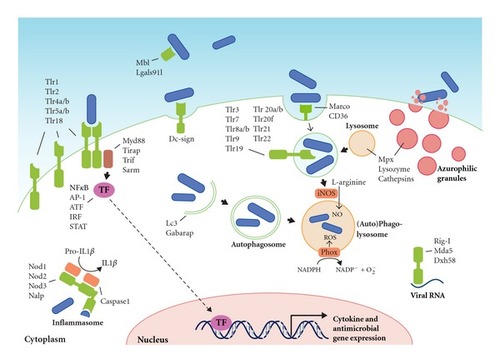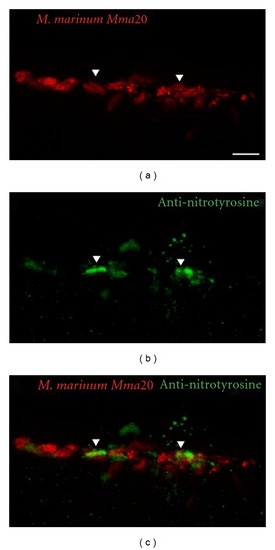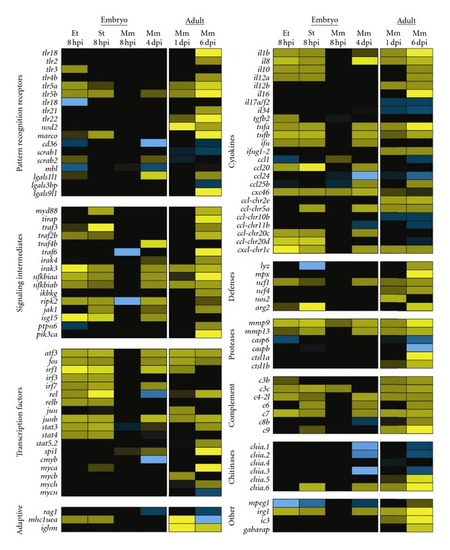- Title
-
Pathogen Recognition and Activation of the Innate Immune Response in Zebrafish
- Authors
- van der Vaart, M., Spaink, H.P., and Meijer, A.H.
- Source
- Full text @ Adv. Hematol.
|
Pattern recognition receptors and effector mechanisms of the innate immune system. The localization of Tlrs on the cell surface or on endosomes is hypothetical and based on the known or proposed functions of their homologs in other fish or mammals. The ability of PRRs (depicted in green) to recognize PAMPs present on various types of microorganisms, like bacteria, viruses, and fungi, has been simplified here by depicting microorganisms as rod-like bacteria (in blue). PAMP recognition by PRRs leads to activation of transcription factors (TFs), which translocate to the nucleus and initiate transcription of cytokine genes, antimicrobial genes, and other immune-related genes. Defense mechanisms such as autophagy, ROS and NO production, and degranulation can be immediately activated upon microbial recognition, without de novo gene transcription. |
|
|
|
|
|
Comparison of the zebrafish innate immune response to different bacterial pathogens. Gene expression profiles of zebrafish embryos and adults infected with |




